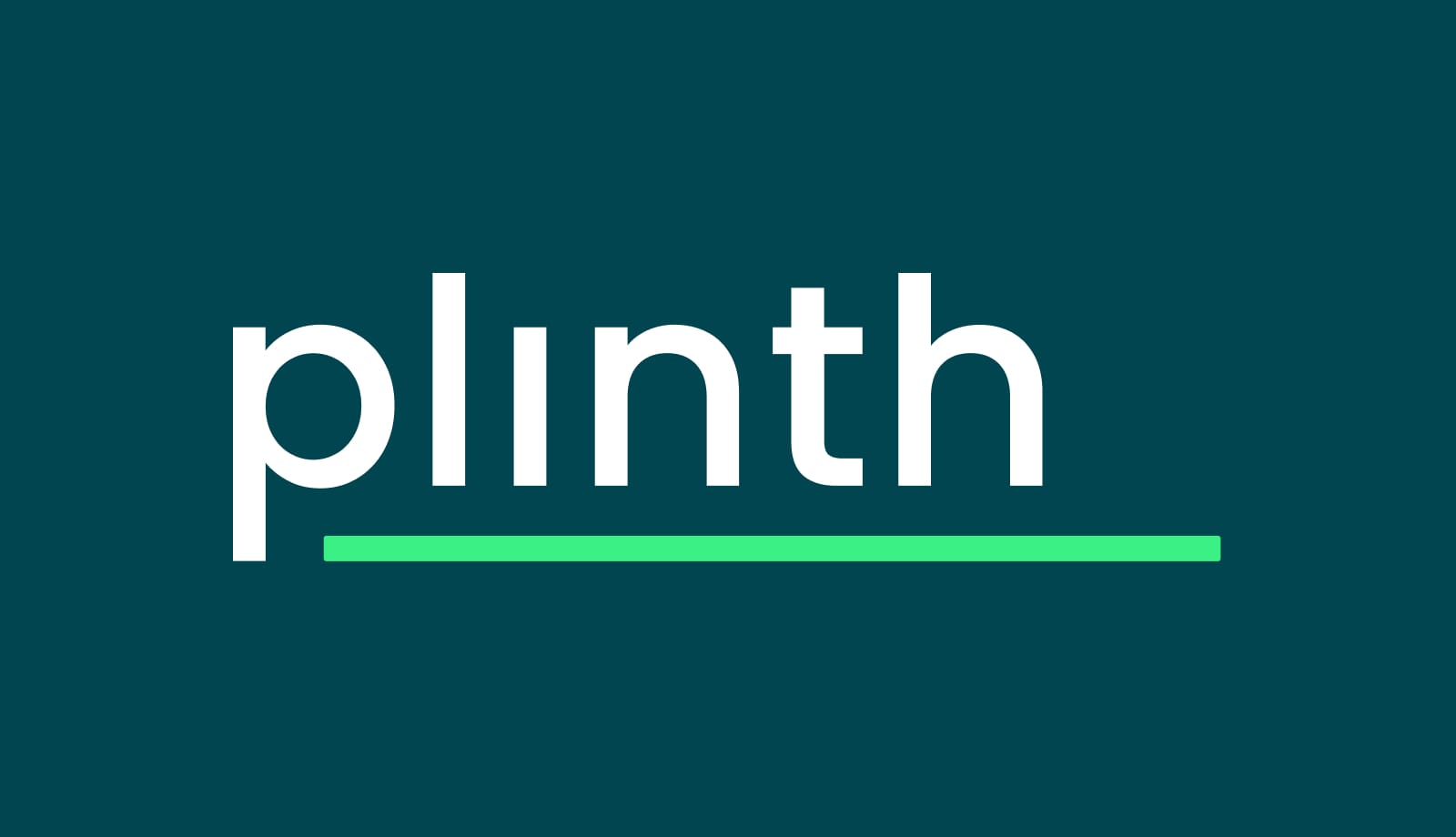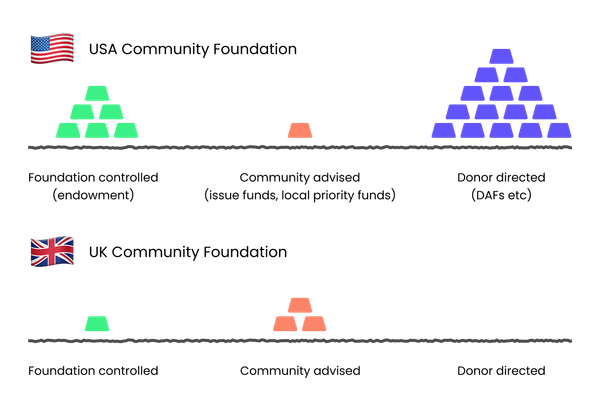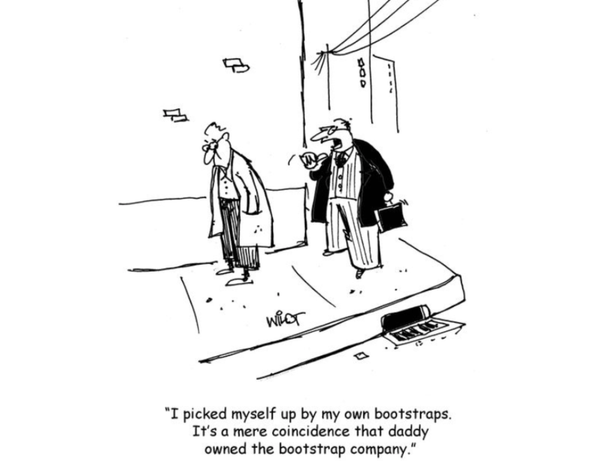Going multiplayer. What does a collaborative platform mean for charities?
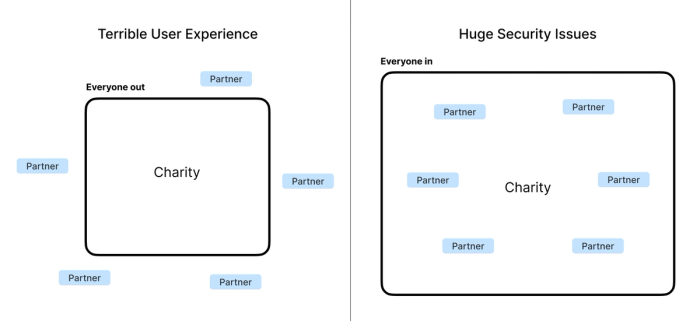
When businesses work together, we call it collusion. It’s usually illegal. But for charities, it’s “collaboration”. Apparently, not working together is “damaging to communities”.
Legally, the UK has a Government department dedicated to “promoting competition”. But the UK also has a Government department that explicitly advises: “Working together can be more effective than setting up a new charity. For example, so there are not two charities competing for resources.”
What’s up with that?
Good collusion
In our view, charities are something of a special case; but not for the above reason from the Charity Commission.
Charities should be encouraged to collaborate, not because of a depressing argument based on scarcity of resources, but because the returns to collaboration are so much bigger than in other sectors.
Santa Claus oughta get a raise
As a child, every Christmas Eve, we would watch the Richard Attenborough version of Miracle on 34th Street. There’s a scene in it, where the definitely-not-Macy’s department store Santa Claus starts recommending customers go elsewhere to get a better deal:

https://www.youtube.com/watch?v=5vWaJiU4OZw
Of course in real life, companies don’t generally do that.
But charities do — all the time! Because the incentives are completely different. When someone comes to a charity for a community activity, for support or for an event, it often costs the charity more to provide this service than they get paid for it (even if the individual pays some money, or if they have a contract/grant with a commissioner). So, if there is another organisation better placed to work with that individual, it’s usually better for the charity to refer them elsewhere.
For an unfortunately all-too-common example, take food banks. There are now 1000s of food banks across the UK, distributing probably over 5 million food parcels each year (though no one knows the true numbers). This costs a lot of money, from donations, from Government (yes, the Government pays for food banks), from companies and from the individuals who attend them (in the form of “pay a little, get a lot” contributions).
Food banks are clearly not a long term solution to poverty. But in many places, they have become the first port of call for people in crisis. This means they are often extremely well placed to refer people onto longer term support, whether that’s employment readiness programmes, welfare advice, housing support or cash first interventions from local Councils. In fact, we helped the Independent Food Aid Network to build a tool to help with this exact process: https://www.worryingaboutmoney.co.uk/
How is this relevant to software platforms?
Because most charity systems are hand-me-downs from the corporate world, this private-sector aversion to “collusion” is baked-in to day-to-day operations. With rare exceptions (like Slack Connect), most tools are built for single, independent organisations. They might span multiple departments in the same enterprise, but your CRM, your Payments Provider or your HR platform are not going to let you connect to an entirely different company.
This means organisations end up hacking or stretching these existing tools to work in a more partnership-focused way.
Hacking the tools
When you take a from-corporate tool that’s accustomed to treating a single organisation as the fundamental dividing line between “in” and “out”, and apply it to the voluntary sector, you get to choose your own misfortune:
- Terrible user experience, or
- Huge security issues
Across the hundreds of charities we’ve worked with, we’ve seen both these options:
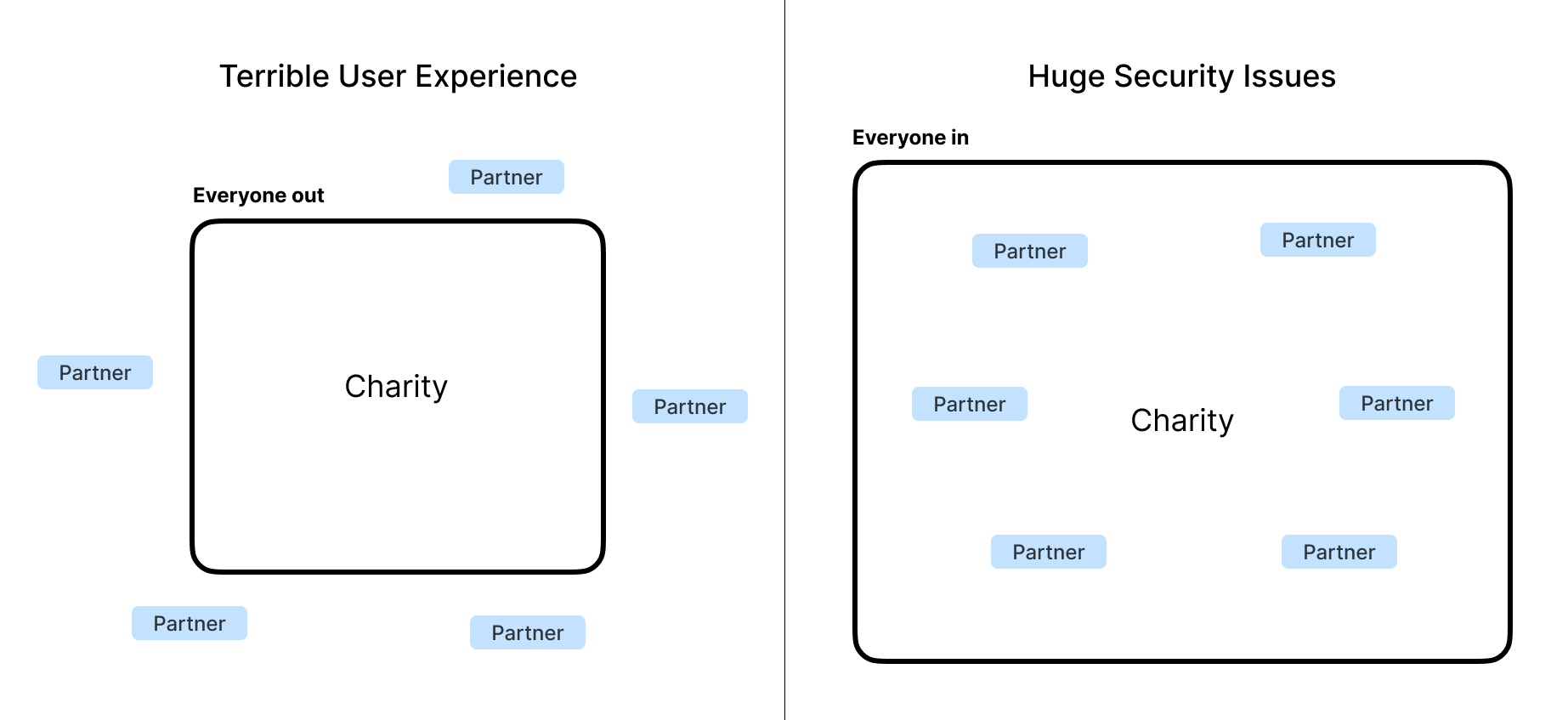
In the first case, one organisation has exclusive access to all the information, and then must choose to manually and laboriously share details with their partners. For good examples of this, just go find out how any part of the NHS works with their local voluntary sector. You’ll see lots of email back and forth, lots of “I don’t think I can view this because I don’t have an NHS account”, but very little productive partnership.
Alternatively, and particularly at large, national, federated organisations, you might see the second approach. Hacking something together, probably based on Salesforce, the national organisation will maintain a system that is shared in its entirety with every local member. That often means that each local charity might have full access to every single individual’s information (and potentially even a full, sensitive case history) across the whole country. So if you drop in to a local organisation in Redcar — a nosey so-and-so from Tunbridge Wells might be able to see all your personal details.
What it should be
Systems built for the community sector, free from the legal, technical and mental constraints of corporate-world, should account for the way the sector actually operates.
Instead of drawing a sharp dividing line between “in” or “out”, a community platform should have a gradual gradient between “public”, “shared” and “private”. A sliding scale, not a thermocline:
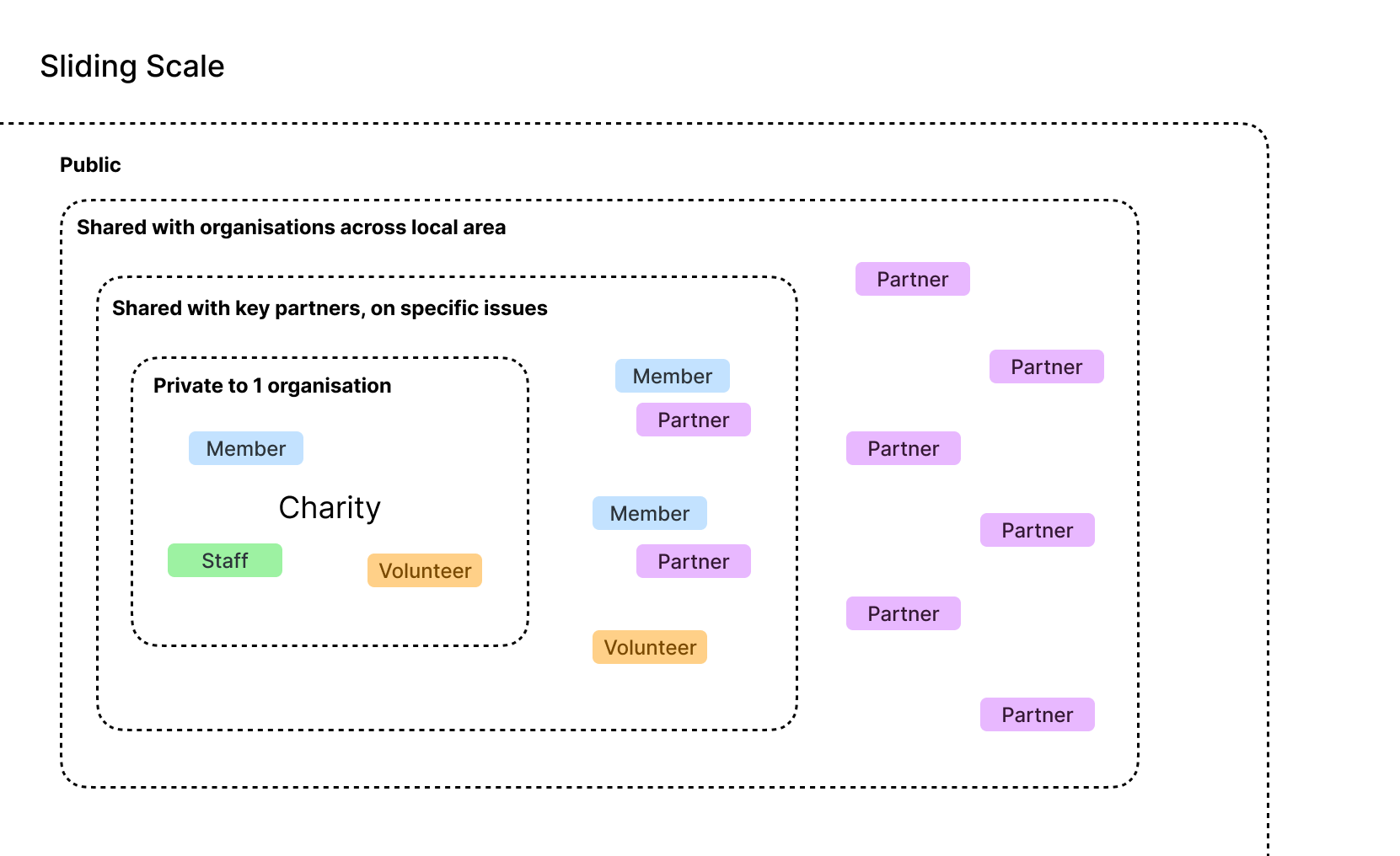
This isn’t a radical innovation. It’s very similar to the model you see on publishing platforms. Whether it’s Google Plus’s Circles, Facebook’s privacy settings, or the way that Notion sets up its sharing and permissions, it’s something that has been tried and has worked elsewhere. The difference is that we’re doing this in SaaS. Directly into the platform that a charity uses to manage their internal programmes, to store information about their members, volunteers and activities, we’re giving them the option to selectively share more publicly with other charities.
This replicates exactly how the sector is currently structured. The charity sector is very much a “network of networks”. Sometimes it feels like you can’t move for umbrella bodies. It’s not even an uncommon thing to see a “coordinating body of coordinating bodies”, like NAVCA:

A collection of organisations as connected as the voluntary sector needs tools that are similarly networked. We’ve built Plinth from the ground up to be able to do this, and now we’re releasing its full functionality.
OK what does that mean, in like, real life?
In the voluntary sector, there’s much idle chat about “collaborating more”, and “working in partnership”, but from that woolliness we’ve pulled out some tangible, concrete “jobs to be done” that are extremely difficult with the current tools.
Referrals
Unlike in private businesses, where sharing customers could amount to illegal anti-competitive behaviour, charities share their beneficiaries all the time. Whether that’s Citizens Advice referring someone to a food bank, a community centre recommending an adventure playground, or a job skills programme recommending an English tutor, this kind of signposting or referring is what leads to holistic, community care — no organisation can support an individual with complex needs entirely alone.
But actually making these referrals are difficult. A charity needs to work out where to send someone, get the individual’s permission, actually send their information, check the organisation can support them, follow up on the outcome of the referral and then report on the referral programme in aggregate. It’s a long, laborious and typically manual process, because you’re repeatedly sending information across organisational dividing lines.
This can be fixed. It’s been done in homelessness, and we’ve been testing a version of this in Camden during the pandemic:
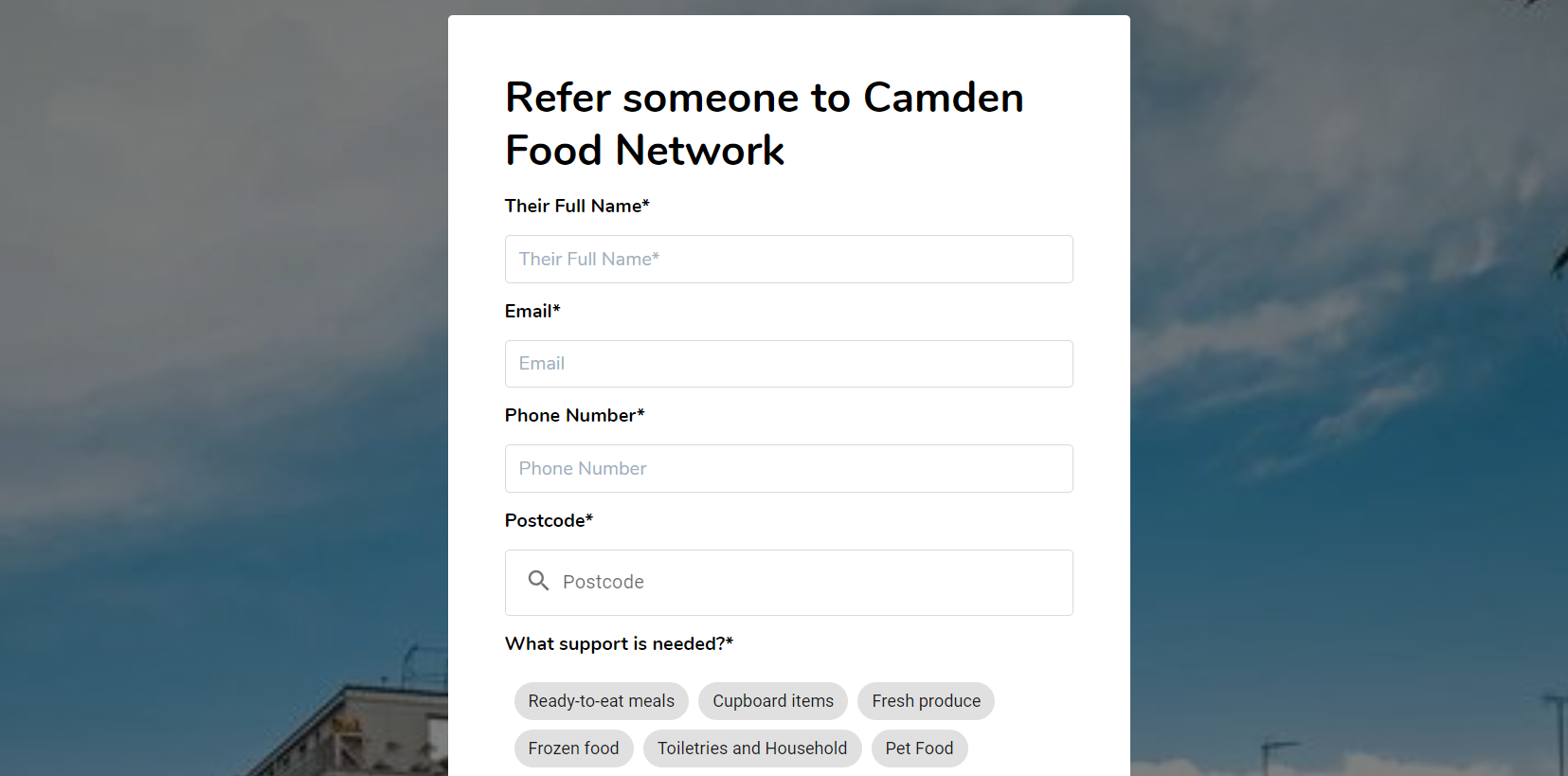
Shared Calendars
A lot of what charitable organisations do is outreach. To engage “hard to reach” populations, charities providing advocacy, advice, healthcare or other support, will often hold drop-in sessions “in the community”.
A single organisation can try to coordinate these sessions so that they are covering all the relevant local areas, communities and population groups. However, if there are multiple related organisations doing similar work (which there often are!), this gets tricky.
Like transhumant shepherds, organisations need to have an awareness of where everyone else has been recently, and where they are planning to go next:

I know this metaphor is a stretch, but I really like this map.
This can work informally, but usually requires a lot of meetings, phone calls and emails. Having one simple shared calendar visible to all these organisations is a lot, lot easier.
Shared bookings
Community organisations often share venues. A community centre might have a bunch of different rooms, halls and studios available for other charities and community groups to use. Right now, each of these groups has their own way of managing their bookings — mostly “please call Janet”, but sometimes they might use Eventbrite or other platforms.
Unfortunately, even though its the same community space, because these are separate organisations, as an individual there’s no easy way to look through all the activities that are happening, and book directly (if necessary).
It also makes it tricky for any evaluation of the “social value of a community space”. Often Local Councils, Housing Associations or corporates will let charities manage a venue in return for delivering “measurable” value to the community. By bringing all the activities together into a shared place, this becomes much easier to do.
Directories
Almost every area of the country has a directory of services provided by their VCS. Whether that’s part of a statutorily required Local Offer or something a communities team in a Local Council or a CVS puts together, it can be a massive undertaking:
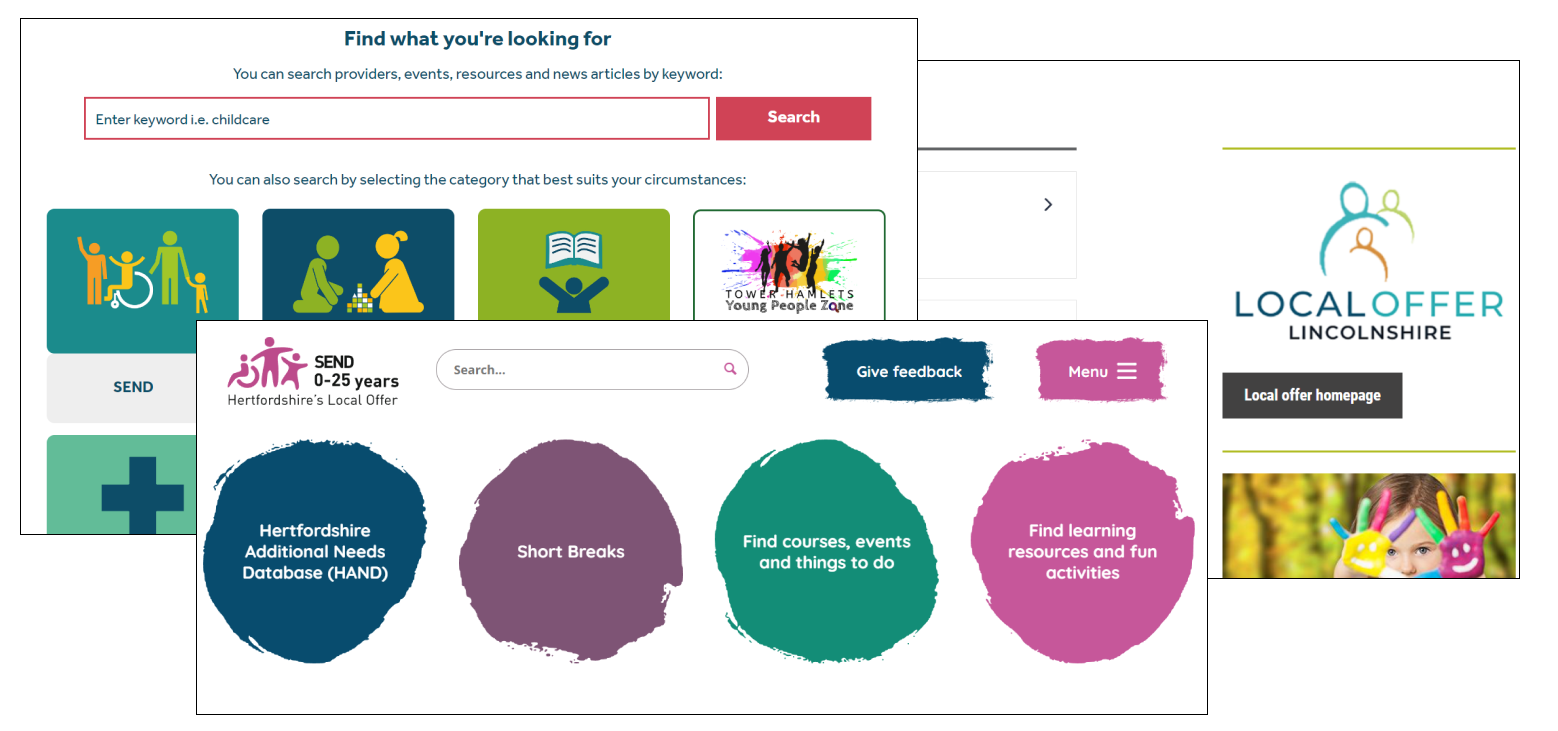
Sometimes, there are multiple full-time staff who have the responsibility of keeping a huge list of constantly changing voluntary services up to date. Often, the voluntary organisations providing the service aren’t able to update their own details, and so everything is bottlenecked at those individuals.
Even if the system does allow organisations to create and update their own listings, it relies on them remembering to do so, when there’s no real strong incentive to.
Clearly, it would be much better for the directory to be based on information about activities that arises naturally as a side effect of organisations managing their own internal affairs (taking registers, activity bookings and managing venue space).
Why are we excited?
We don’t normally write long blog posts with maps and diagrams for every big feature we release (though maybe we should?). But this one has got us particularly excited as a company.
Up to now, we’ve had a lot of success working with charities internally — helping them keep information about their activities, members and outcomes all in one place. In fact, over 70% of organisations using Plinth are still using it regularly 12 months later.
We’ve also had success driving a feedback loop between charities and their funders. We work with a Local Authority, Housing Association or local charitable foundation, helping them collect data for impact reports and manage their grant programmes. This brings in charities they work with:
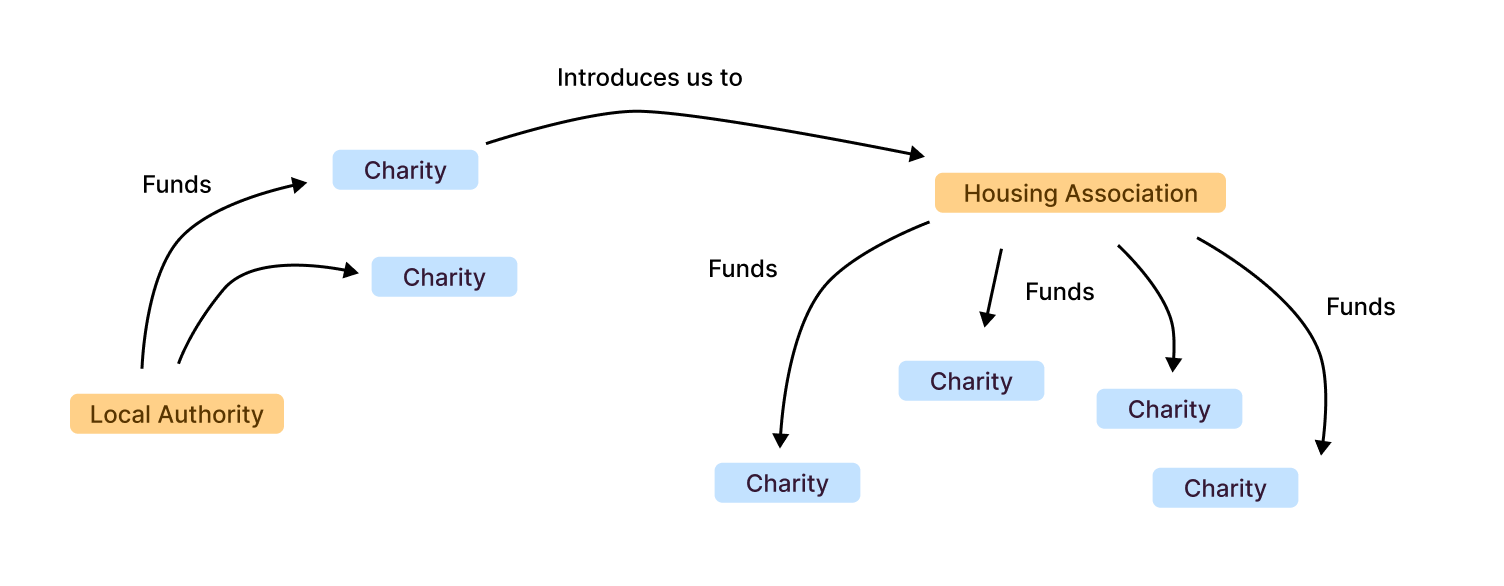
This looks quite similar to the “Market Network” structure that is becoming more common in lots of different industries.
However, unlike “market networks” for the private sector, our new partnership tools give us a much more exciting option. Similar to social networks, messaging platforms and file sharing tools, we’ll be in the situation where one charity joining Plinth will encourage many other charities to join their network or partnership. Essentially, viral growth, built on top of our existing high retention:
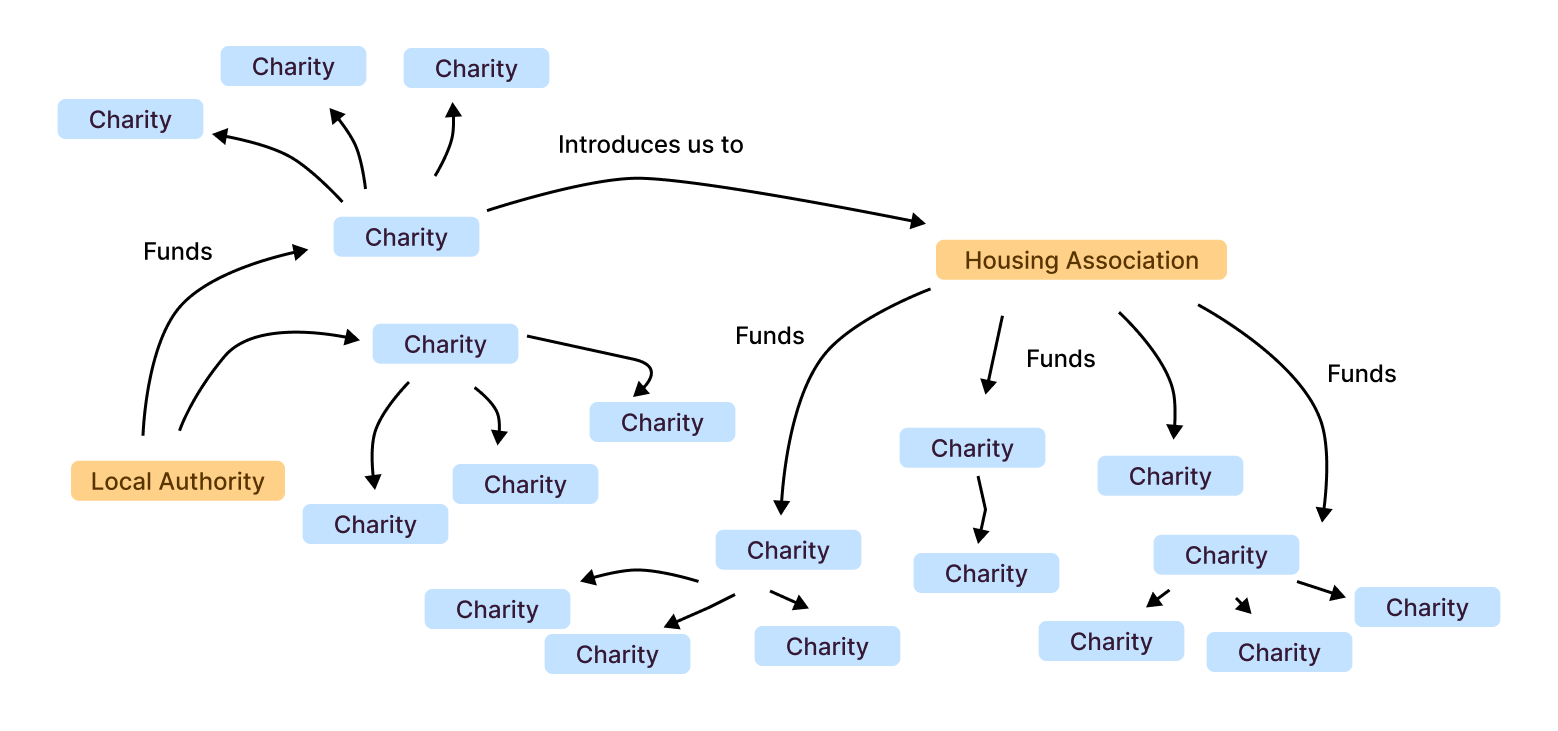
It will mean we have more time and more money to spend on developing the platform itself. We’ll be handing over less money to Google or Facebook. But also, our growth will be clearly and directly dependent on how helpful our platform is to individual charities and community networks, so our incentives will be directly and clearly aligned with our most important customers.
Why should you care?
I hope it's clear why this is interesting if you work for a charity or want to partner with us, but even if none of those you, this is pretty exciting.
Our ultimate aim is to build the “platform” for the community sector. Something that’s open to all, allows organisations to connect with each other (and with individuals), and comes complete with a set of shared tools, so no one has to constantly re-invent the wheel.
If you look elsewhere, this kind of “platform” has dramatically changed almost everything we do:
- Amazon Web Services cut the cost of building an app to pennies.
- Shopify has let 1.75 million businesses get started with selling stuff online.
- The Government Digital Service took 2,000+ Government services online in less than a decade.
To quote Ben Thompson:
Platforms are the most powerful economic and innovation engines in technology: they create the possibility for products that never existed previously, and are the foundation for huge amounts of innovation.
By creating this “community impact platform”, we can bring a similar scale of innovation to the charity sector. This isn’t a radically new idea — it was first suggested by DotEveryone back in 2018, but nothing tangible was actually built or created. But since then, we’ve been quietly busy.
And this is genuinely vital, because the sector is gargantuan. In the UK, charities earn £56 billion per year. In the USA, nearly $2 trillion. For context, that’s almost twice the size of the UK’s advertising market, 4 times more than the income of all the country’s restaurants and 67x the size of the fishing industry (sorry, that’s a Brexit joke).
And even more than just its income, the charity sector is delivering services that no one else will, providing valuable and life-changing support to people without many other options.
But there are many parts that are very, very broken.
Resolving the funding model
Firstly, the grant-funding model is extremely inefficient. We’ve written about this before. Applying to grants, reporting on existing grants and managing grant processes for funders are all laborious and time-consuming processes. The unsolved underlying problem in all of these cases is the issue of asymmetric information: when it comes to a specific local geography, or a specific issue, the charity looking for funding knows far more than any funder, yet the funder is the one making the decision. A “community impact platform”, where each charity can share a full profile, history and evidence of the impact they are delivering, will bring much more transparency to this process, making it much more effective.
More of this kind of transparency would also help to remedy the inequality in charity funding. When you look at funding from grant foundations, and from Government, as a share of their income large organisations receive twice as much as smaller charities. This is despite the fact that 80% of charities are classed as “small” (i.e. having an income of less than £100,000/year):

There does also seem to be evidence of other inequalities in grant funding. Last year, Paul Hamlyn foundation found that grants to black or minoritised organisations tended to be smaller and shorter than average. And across the sector as a whole, only 3% of charity CEOs are BAME, compared to 15% of the working population of England and Wales (over the age of 30). By shining a more evidence-based, and more objective light on the work done by all organisations, we expect this to start to change.
Finally, the structure of charity funding is currently designed so that no one involved can ever become an expert — neither funders nor charities. Becoming an expert requires a few different things:
- A valid environment
- Many repetitions
- Timely feedback
- Deliberate practice
None of these are present in grant funding arrangements. Slow application cycles of potentially many months, requirements for grants to fund “new projects” rather than core costs, and perpetually changing funder priorities, mean that charities and funders alike can’t invest long term in any successful strategies or ideas. If our community impact platform can help to replace this process with smaller, more frequent, and more predictable funding agreements, akin to payment by results contracts (but without the current legal overhead and risk), the sector can work towards much greater expertise.
What’s more?
We’re focused on fixing problems, but we’re also aware that successful platforms unlock new and exciting products, solutions and services that were never previously possible. We don’t know exactly what these will be — that’s kind of the point — but we have had some thoughts about which general directions they might come from.
Distribution
Community organisations have regular contact with some of the “hardest to reach” populations in the country. They regularly work effectively with people where English is not the first language, those without access to the internet/devices or people with No Recourse to Public Funds. These are groups that Central Government departments, Local Government, the NHS and other charities are all trying to better support, but outreach can be extremely expensive or difficult: just look at the £1 billion the UK government spent on advertising during the pandemic. Working in partnership with charities to distribute information or support to these people is already a common approach, but bringing this together into one platform would likely massively improve its effectiveness.
But it’s not just distribution to the individuals charities support that could be useful. Charities and their staff themselves could benefit from a central platform. Whether it’s the NHS providing mental health support to frontline staff in charities, corporates wanting to offer skilled volunteering time or software developers wanting to help close the digital skills/tools gap between charities and companies, there are people that can help, but can’t find a way to reach community organisations at scale. Like the Xero or Salesforce app stores, a central platform would start to improve this process.
Evidence-based preventative work
It’s no secret that most spending is reactive: responding to immediate crisis rather than providing holistic early preventative support. In UK health and social care, fixing this has been seriously on the radar since 2004, and has become even more important with the increase of focus on public health during the pandemic. If you look at how the Government sees this working in practice, at their list of case studies, you can see how many of them depend on working with local community organisations to deliver this work. However, without a widely used platform to record the effectiveness of these programmes, it’s going to be extremely difficult to justify ever increasing spending in this area.
What next?
Some of this is clearly well ahead of where we’re at with Plinth right now; but this is what we’re working towards. We know that getting there isn’t going to be easy, and it’s going to depend on working extremely closely with thousands of different charities across the country and beyond.
If you work for a charity and you like the sound of any of this, you can use Plinth for free by just going to https://plinth.org.uk.
If you just found this interesting, you can follow me (@TomJNeill) or Plinth (@usePlinth) on Twitter.
And if you want to get in touch more urgently or about something specific, drop me an email at tom@plinth.org.uk.
